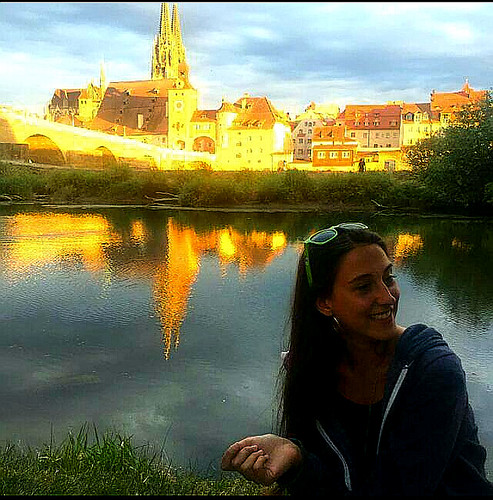Tio traces of each compartment. Regions were imaged for approximately 300 seconds followed by the addition of 100 mM extracellular ZnCl2 at the time indicated. Nuclear FRET ratios rose immediately after the addition of Zn2+. The background corrected FRET ratio (FRET Intensity 4 Donor Intensity) is represented as a function of time. Each experiment was repeated a minimum of three times with a minimum of 3? cells per field of view. (PDF)(-)-Calyculin A site Figure SZn2+ uptake into cytosol. Sensors were localized to cytosol to monitor uptake of extracellular Zn2+. A) NESZapSM2, B) NES-ZapSR2, C) NES-ZapOC2, D) ZapOK2, E) NES-ZapCmR1.1, and F) NES-ZapCmR2. Plots represent FRET Ratio traces of each compartment. Regions were imaged for approximately 300 seconds followed by the addition of 100 mM extracellular ZnCl2 at the time indicated. Cytosolic FRET ratios rose immediately after the addition of Zn2+. The background corrected FRET ratio (FRET Intensity 4 Donor Intensity) is represented as a function of time. Each experiment was repeated a minimum of three times with a minimum of 3? cells per field of view. (PDF)Figure S6 Table S1 Amino acid sequence of Zap Zinc Binding Domains (ZBD). Zap1 disassociation constant (Kd) = 2.53 pM; Zap2 (Kd) = 811 pM; Zap1.1 (Kd) = undetermined. (DOCX) Table S2 Filter sets and dichroic mirrors used for cellular imaging. For FRET experiments, the donor excitation filter and dichroic mirror are used along with the emission filter of the acceptor FP. (DOCX) Table S3 Percent Bleedthrough of Fluorescent Proteins. Each experiment was performed in triplicate and a minimum of 6cells per field of view were observed. Values Lecirelin site reported represent the mean 6 SEM. Excitation filters, Dichroic mirrors, and  Emission filters for each channel are given in Table S1. 1 Percent intensity was calculated as follows: Intensity in the designated channel divided by Intensity in the channel of the transfected FP. Crosstalk between the donor channels is highlighted in bold. (DOCX) Table S4 Percent Bleedthrough of sensor into FRET channels. Each experiment was performed in triplicate and a minimum of 4-cells per field of view were observed. Values reported represent the mean 6 SEM. Cells were transfected with FRET sensor listed in the left column. The sensors were excited with their respective excitation filters and the emission intensity in each of the channels on
Emission filters for each channel are given in Table S1. 1 Percent intensity was calculated as follows: Intensity in the designated channel divided by Intensity in the channel of the transfected FP. Crosstalk between the donor channels is highlighted in bold. (DOCX) Table S4 Percent Bleedthrough of sensor into FRET channels. Each experiment was performed in triplicate and a minimum of 4-cells per field of view were observed. Values reported represent the mean 6 SEM. Cells were transfected with FRET sensor listed in the left column. The sensors were excited with their respective excitation filters and the emission intensity in each of the channels on  the right hand side was measured. Excitation filters, Dichroic mirrors, and Emission filters for each channel are given in Table S3. Percent intensity was calculated asSupporting InformationFigure S1 Absorption and Emission Spectra of Purified Sensor Protein. Scans of A) ZapSM2, B) ZapSR2, C) ZapOC2, D) ZapOK2, and E) ZapCmR2. Plots represent absorption spectra of each FRET sensor (red traces); emission spectra in the presence of Zn2+ (,150 mM – green traces) and in the absence of Zn2+ (1 mM EGTA – blue traces). For excitation and emission parameters refer to materials and methods section of the text. Given the published molar extinction coefficient and quantum yield ZapCmR2 is proteolyzed resulting in a small mRuby2 FRET emission peak. (PDF) Figure S2 Bleed-through of fluorescent proteins. Representative images for bleedthrough measurements. Cells were transfected with the FP listed on the left hand side and the fluorescence intensity in channels A through F were measured. Ex = Excitation and Em = Emission in nanometers. (PDF) Figure S3 Bleed-through of fluorescent proteins. Representative images fo.Tio traces of each compartment. Regions were imaged for approximately 300 seconds followed by the addition of 100 mM extracellular ZnCl2 at the time indicated. Nuclear FRET ratios rose immediately after the addition of Zn2+. The background corrected FRET ratio (FRET Intensity 4 Donor Intensity) is represented as a function of time. Each experiment was repeated a minimum of three times with a minimum of 3? cells per field of view. (PDF)Figure SZn2+ uptake into cytosol. Sensors were localized to cytosol to monitor uptake of extracellular Zn2+. A) NESZapSM2, B) NES-ZapSR2, C) NES-ZapOC2, D) ZapOK2, E) NES-ZapCmR1.1, and F) NES-ZapCmR2. Plots represent FRET Ratio traces of each compartment. Regions were imaged for approximately 300 seconds followed by the addition of 100 mM extracellular ZnCl2 at the time indicated. Cytosolic FRET ratios rose immediately after the addition of Zn2+. The background corrected FRET ratio (FRET Intensity 4 Donor Intensity) is represented as a function of time. Each experiment was repeated a minimum of three times with a minimum of 3? cells per field of view. (PDF)Figure S6 Table S1 Amino acid sequence of Zap Zinc Binding Domains (ZBD). Zap1 disassociation constant (Kd) = 2.53 pM; Zap2 (Kd) = 811 pM; Zap1.1 (Kd) = undetermined. (DOCX) Table S2 Filter sets and dichroic mirrors used for cellular imaging. For FRET experiments, the donor excitation filter and dichroic mirror are used along with the emission filter of the acceptor FP. (DOCX) Table S3 Percent Bleedthrough of Fluorescent Proteins. Each experiment was performed in triplicate and a minimum of 6cells per field of view were observed. Values reported represent the mean 6 SEM. Excitation filters, Dichroic mirrors, and Emission filters for each channel are given in Table S1. 1 Percent intensity was calculated as follows: Intensity in the designated channel divided by Intensity in the channel of the transfected FP. Crosstalk between the donor channels is highlighted in bold. (DOCX) Table S4 Percent Bleedthrough of sensor into FRET channels. Each experiment was performed in triplicate and a minimum of 4-cells per field of view were observed. Values reported represent the mean 6 SEM. Cells were transfected with FRET sensor listed in the left column. The sensors were excited with their respective excitation filters and the emission intensity in each of the channels on the right hand side was measured. Excitation filters, Dichroic mirrors, and Emission filters for each channel are given in Table S3. Percent intensity was calculated asSupporting InformationFigure S1 Absorption and Emission Spectra of Purified Sensor Protein. Scans of A) ZapSM2, B) ZapSR2, C) ZapOC2, D) ZapOK2, and E) ZapCmR2. Plots represent absorption spectra of each FRET sensor (red traces); emission spectra in the presence of Zn2+ (,150 mM – green traces) and in the absence of Zn2+ (1 mM EGTA – blue traces). For excitation and emission parameters refer to materials and methods section of the text. Given the published molar extinction coefficient and quantum yield ZapCmR2 is proteolyzed resulting in a small mRuby2 FRET emission peak. (PDF) Figure S2 Bleed-through of fluorescent proteins. Representative images for bleedthrough measurements. Cells were transfected with the FP listed on the left hand side and the fluorescence intensity in channels A through F were measured. Ex = Excitation and Em = Emission in nanometers. (PDF) Figure S3 Bleed-through of fluorescent proteins. Representative images fo.
the right hand side was measured. Excitation filters, Dichroic mirrors, and Emission filters for each channel are given in Table S3. Percent intensity was calculated asSupporting InformationFigure S1 Absorption and Emission Spectra of Purified Sensor Protein. Scans of A) ZapSM2, B) ZapSR2, C) ZapOC2, D) ZapOK2, and E) ZapCmR2. Plots represent absorption spectra of each FRET sensor (red traces); emission spectra in the presence of Zn2+ (,150 mM – green traces) and in the absence of Zn2+ (1 mM EGTA – blue traces). For excitation and emission parameters refer to materials and methods section of the text. Given the published molar extinction coefficient and quantum yield ZapCmR2 is proteolyzed resulting in a small mRuby2 FRET emission peak. (PDF) Figure S2 Bleed-through of fluorescent proteins. Representative images for bleedthrough measurements. Cells were transfected with the FP listed on the left hand side and the fluorescence intensity in channels A through F were measured. Ex = Excitation and Em = Emission in nanometers. (PDF) Figure S3 Bleed-through of fluorescent proteins. Representative images fo.Tio traces of each compartment. Regions were imaged for approximately 300 seconds followed by the addition of 100 mM extracellular ZnCl2 at the time indicated. Nuclear FRET ratios rose immediately after the addition of Zn2+. The background corrected FRET ratio (FRET Intensity 4 Donor Intensity) is represented as a function of time. Each experiment was repeated a minimum of three times with a minimum of 3? cells per field of view. (PDF)Figure SZn2+ uptake into cytosol. Sensors were localized to cytosol to monitor uptake of extracellular Zn2+. A) NESZapSM2, B) NES-ZapSR2, C) NES-ZapOC2, D) ZapOK2, E) NES-ZapCmR1.1, and F) NES-ZapCmR2. Plots represent FRET Ratio traces of each compartment. Regions were imaged for approximately 300 seconds followed by the addition of 100 mM extracellular ZnCl2 at the time indicated. Cytosolic FRET ratios rose immediately after the addition of Zn2+. The background corrected FRET ratio (FRET Intensity 4 Donor Intensity) is represented as a function of time. Each experiment was repeated a minimum of three times with a minimum of 3? cells per field of view. (PDF)Figure S6 Table S1 Amino acid sequence of Zap Zinc Binding Domains (ZBD). Zap1 disassociation constant (Kd) = 2.53 pM; Zap2 (Kd) = 811 pM; Zap1.1 (Kd) = undetermined. (DOCX) Table S2 Filter sets and dichroic mirrors used for cellular imaging. For FRET experiments, the donor excitation filter and dichroic mirror are used along with the emission filter of the acceptor FP. (DOCX) Table S3 Percent Bleedthrough of Fluorescent Proteins. Each experiment was performed in triplicate and a minimum of 6cells per field of view were observed. Values reported represent the mean 6 SEM. Excitation filters, Dichroic mirrors, and Emission filters for each channel are given in Table S1. 1 Percent intensity was calculated as follows: Intensity in the designated channel divided by Intensity in the channel of the transfected FP. Crosstalk between the donor channels is highlighted in bold. (DOCX) Table S4 Percent Bleedthrough of sensor into FRET channels. Each experiment was performed in triplicate and a minimum of 4-cells per field of view were observed. Values reported represent the mean 6 SEM. Cells were transfected with FRET sensor listed in the left column. The sensors were excited with their respective excitation filters and the emission intensity in each of the channels on the right hand side was measured. Excitation filters, Dichroic mirrors, and Emission filters for each channel are given in Table S3. Percent intensity was calculated asSupporting InformationFigure S1 Absorption and Emission Spectra of Purified Sensor Protein. Scans of A) ZapSM2, B) ZapSR2, C) ZapOC2, D) ZapOK2, and E) ZapCmR2. Plots represent absorption spectra of each FRET sensor (red traces); emission spectra in the presence of Zn2+ (,150 mM – green traces) and in the absence of Zn2+ (1 mM EGTA – blue traces). For excitation and emission parameters refer to materials and methods section of the text. Given the published molar extinction coefficient and quantum yield ZapCmR2 is proteolyzed resulting in a small mRuby2 FRET emission peak. (PDF) Figure S2 Bleed-through of fluorescent proteins. Representative images for bleedthrough measurements. Cells were transfected with the FP listed on the left hand side and the fluorescence intensity in channels A through F were measured. Ex = Excitation and Em = Emission in nanometers. (PDF) Figure S3 Bleed-through of fluorescent proteins. Representative images fo.
